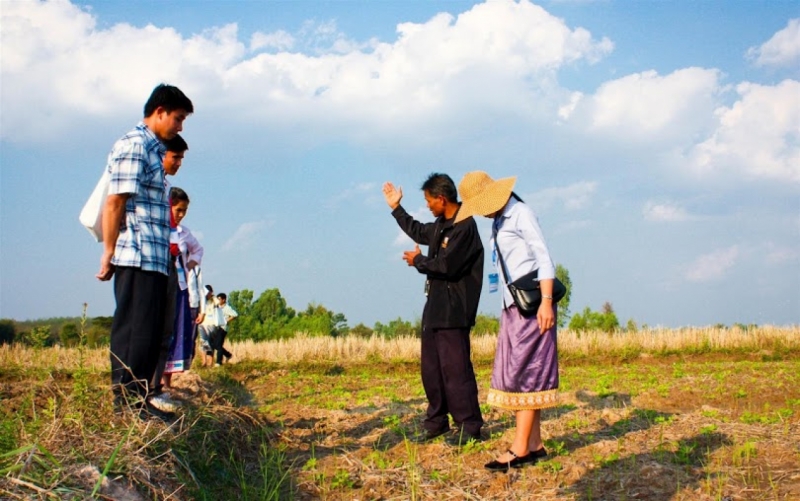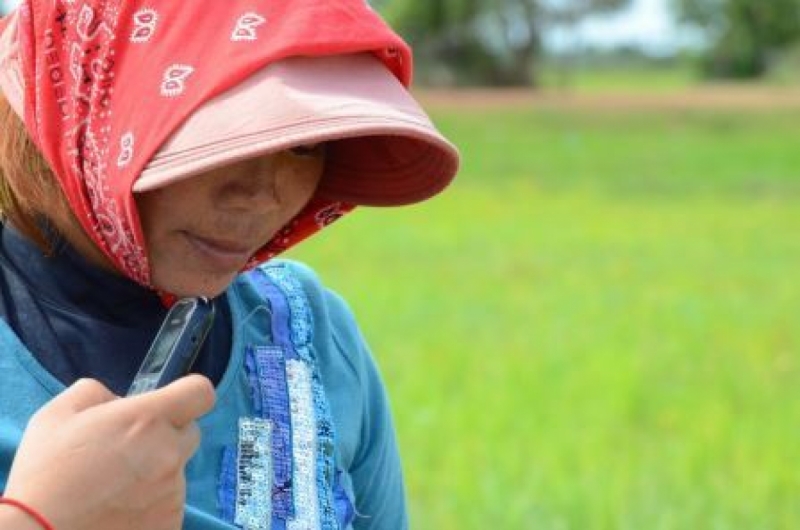




Agriculture is an industry that is heavily reliant on nature and the environment. Soil types and topography determine the kind of agricultural activity that a community engages in. Climate and weather patterns dictate the kind of crops to be planted and the cycle of planting and harvesting.
But agriculture is also an industry that is largely information-driven, from knowledge of farming techniques and technologies to market information. In so many ways then, the labor-driven orientation of agriculture cannot be separated from the intensely information-heavy, knowledge-based inputs that it requires.
Bridging gaps in inputs
Information, communication and technology (ICT) may be likened to the backstage crew that makes possible for the frontliners to perform. Indeed, it is the physical inputs like land, irrigation, fertilizers and seedlings that produce the food that we eat, but it is ICT that enables researchers and most of all farmers to optimize the use of these physical inputs so that it would yield the maximum output.
And yet while research may have already produced a wide array of knowledge products and technologies on farming systems and agricultural practices, crop varieties, irrigation systems, and the proper use of fertilizers, among many others, farmers still complain about the lack of information. There are many factors, but perhaps one of the most critical is the issue of access. While we have available knowledge, how is that knowledge made easily accessible to the sectors that need it most? How do we harness technology so that it efficiently and effectively informs decisions and practices of farmers?
Improving Rice Farmer’s Livelihoods through Rice Information Technology
These questions formed part of the rationale for the Asian Development Bank’s 2004 grant titled, “Improving Rice Farmer’s Livelihoods through Rice Information Technology.” The grant was designed to aid farmers in the Greater Mekong Sub-region, particularly Cambodia, Vietnam and Thailand in improving their livelihood and food security conditions by increasing their access to right and up-to-date farm information.
The project had a two-pronged objective: One, translate agricultural information into localized forms usable to farmers; and two, strengthen the knowledge network of agricultural extension workers and key national agencies especially in the use of ICT in agriculture. While there may be information on farming and agricultural technologies, these are presented in a form and language not easily understood by farmers and even local agricultural extension workers. The challenge then had been to localize globally and nationally-available information so that they address the information needs of the local farmers in Cambodia, Thailand and Vietnam. At the very least, this means translating agricultural information into local languages.
IRRI’s Rice Knowledge Bank
The Rice Knowledge Bank of the International Rice Research Institute (IRRI) served as an integral tool in this ICT-oriented project. As the implementing partner agency, IRRI proposed the idea of the rice knowledge bank to serve as a platform for accessing up-to-date and localized information and agricultural technologies for the use of farmers but more so, of extension workers working in the field.
But this isn’t all. While the rice knowledge bank served as the primary repository of information, the project’s other activities also included the packaging of localized information into other forms like CDs, leaflets and brochures; and the development and implementation of culturally-appropriate training packages to address information needs. These were carried out through the implementing agencies in the three countries and the agricultural service institutions that served as ICT sites.
Not the first, certainly not the last
This ADB-IRRI project, however, was not the first and most definitely not the last initiative that looked at harnessing ICT for agriculture.
 In India, farmers use cellular phones to get market information. Mobile applications are becoming the easy source of agricultural information in parts of Africa and Central America. The traditional rural radio has been used in agricultural extension in Ghana and in many other farming communities in India and Southeast Asia. Scientists are using ICT to develop a computer model to help farmers set their planting schedules. In many parts of the world, there is a strong interest to explore ways by which agricultural information may be made more relevant and accessible to farmers.
In India, farmers use cellular phones to get market information. Mobile applications are becoming the easy source of agricultural information in parts of Africa and Central America. The traditional rural radio has been used in agricultural extension in Ghana and in many other farming communities in India and Southeast Asia. Scientists are using ICT to develop a computer model to help farmers set their planting schedules. In many parts of the world, there is a strong interest to explore ways by which agricultural information may be made more relevant and accessible to farmers.
Challenges continue
Localizing the information and making them available on alternative platforms through ICT are not, however, the end of the road. The more important question of how to make ICT itself accessible and available in the local, especially rural communities must be addressed. This was one of the challenges encountered in the ADB project. The lack of ICT infrastructure in the rural areas had not allowed for the full and maximum use of the information available through ICT by the farmers. Such infrastructure can pertain to something as simple as availability of electricity that will power up cellphones and computers, and something as important as the cost of broadband or Internet access.
There is also the issue of the end-user’s knowledge and capacity to use the ICT. While information may have already been localized, farmers would still need to know how to use a cellphone or a computer to access the information. Hence, training on the use of these technologies remain an integral component of using ICT for agriculture.
There is also the matter of sustainability because like any external intervention, the issue of whether the community can maintain the operation of the technology once funding and support have been pulled out remains a big question. Community capacities must not only be built and strengthened, but the role of national agencies in supporting and ensuring the sustainability of these ICT projects should be clearly defined.
Years after the ADB project has concluded and even now when breakthroughs in traditional and new media are opening opportunities to make agricultural information more accessible than ever before, there are still farmers and rural communities that remain in the dark and are consequently left behind. Clearly, there is a need for a more proactive and conscious effort to reach out to these groups, develop policies that will institutionalize a more efficient and effective use of ICT for spreading agricultural knowledge and information; and create an enabling environment that will encourage intended end-users to actually utilize such technologies.